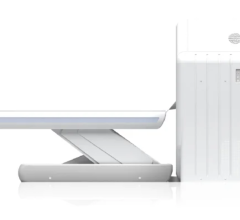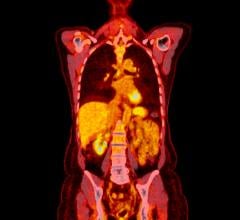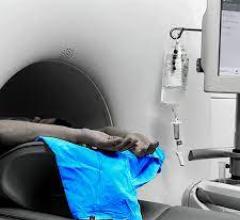September 18, 2007- With PET-guided lead placement, cardiac resynchronization therapy (CRT) can achieve significant clinical improvement in patients with severe ischemic heart failure, even in the presence of extensive scarring, reported investigators at the American Society of Nuclear Cardiology meeting, held in San Diego, CA, from September 6 – 9.
The preliminary study found that two-thirds of patients responded to therapy, despite evidence that CRT works only in patients with nonischemic heart failure, indicated Lucie Riedlbauchova, M.D., the Institute for Clinical and Experimental Medicine in Prague, Czech Republic.
"Our results show that CRT-associated reverse remodeling can be expected even in patients with extensive left ventricular scarring," said Dr. Riedlbauchova. "Using PET to place CRT leads remotely from the scar is associated with a more sizeable treatment effect."
The study involved 66 CRT patients with documented stenosis of 60 percent or more in at least one coronary artery (or a history of myocardial infarction), who received PET exams using both rubidium-82 perfusion imaging and 18F-FDG viability assessment prior to CRT implantation. The median follow-up was 16 months.
According to investigaors, lead placement and pacing remotely from scar area led to significant improvement in NYHA classification and to reverse remodeling. Myocardial hibernation or ischemia at the site of pacing did not affect the therapeutic impact of CRT.
The nonresponse rate was 35 percent, despite the presence of extensive left ventricular scarring in the patient population. Twenty patients died during follow-up, 14 of whom were nonresponders. Among the patients who died, the time from CRT implantation to death was significantly longer in patients who had responded to resynchronization therapy (34 months versus 9 months in nonresponders, P=0.01) and in patients who had scarring that involved less than 25 percent of the left ventricle (P=0.01 versus more extensive scarring).
For more information: www.asnc.org


 March 03, 2025
March 03, 2025 




![Phase III clinical trial of [18F]flurpiridaz PET diagnostic radiopharmaceutical meets co-primary endpoints for detecting Coronary Artery Disease (CAD)](/sites/default/files/styles/content_feed_medium/public/Screen%20Shot%202022-09-13%20at%203.30.13%20PM.png?itok=2w6OoNd6)



